
18 Uniquely Cuban Things to Buy in Havana
1. Paintings
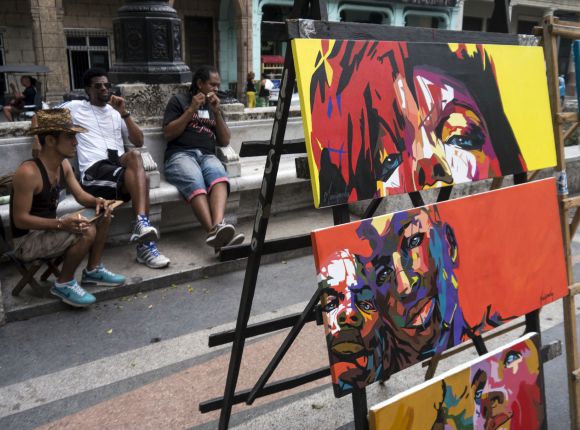
Desampardos, Havana, Cuba
aisles and aisles of paintings, jewelry and other local handicrafts.
Centro Wilfredo Lam: S Ignacio 22 esq. Empedrado; Mon-Sat 10am-5pm. Temporary exhibits with contemporary art from the 3rd World.
+53 7 612096 cnap.cult.cu
Galeria Forma: C/Obispo #255 e/ Cuba y Aguiar; Mon-Sat 10 am-4 pm. Small-format sculptures by prominent Cuban artists. Also painting.
Galeria Habana: C/Linea e/ E y F, Vedado; Mon.-Sat. 10am-4 pm. Paintings, silkscreen prints, and drawings by young Cuban artists.
2
2. Wood Handicraft
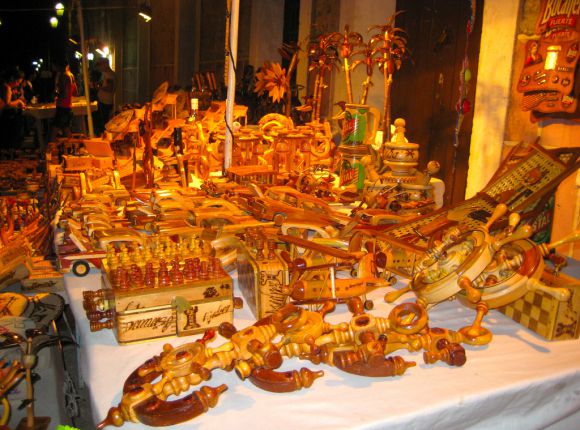
Cuba may well not have a very long tradition of handicrafts, but the inflow of tourists in recent years has prompted local artisans to quickly make up for the lost time. Numerous gift shops and street markets all over the city are teeming with locally-produced handicrafts. Their most popular merchandise include woodcarvings and statues, papier-mâché masks and religious figurines, as well as simple jewelry made from shells and seeds. Also on sale are a variety of Afro-Cuban percussion instruments, such as two-headed, hourglass-shaped bata drums; paired bongos, carved African-style religious drums; and congas, the modern salsa backbone. Shékeres (gourd shakers) and claves (two wooden sticks used to play the fundamental rhythm in various Cuban genres) are also available.
The Calle Tacón market was once a huge crafts market in Havana. After it closed down a few years ago, all its vendors have relocated to the Almacenes San José, which is now the city´s largest craft market, offering clothing, paintings, tourist souvenirs, ceramics, baseball bats, jewelry, and a multitude of other products. It is open daily 9am-5pm.
Another open street market, much smaller, operates daily in Vedado on the south side of La Rampa, at Calle 23, between Calles M and N. It stays open from 9am to 5pm, and, although much lesser on the artwork than Calle Tacón, still features lots of woodcarvings and simple jewelry for sale.
3. World-Famous Cuban Cohiba Cigars
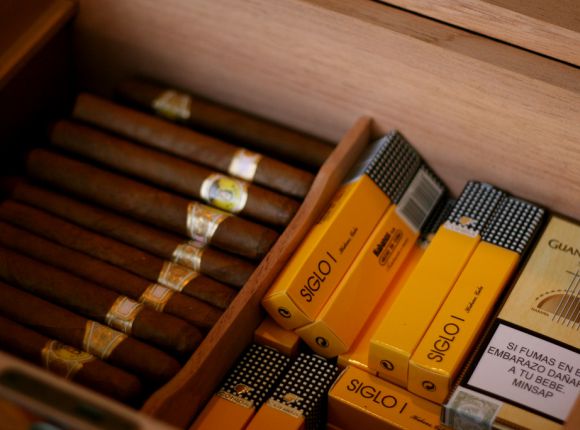
Cohibas are very well regarded amongst the world elite and will make a great present even for a non-smoker. The cigars are made by Habanos SA, using top secret methods and tobacco from 10 handpicked fields. The process of production is also considered unique, it involves several stages of fermentation and yields some of the smoothest full-bodied cigars available. Please keep in mind that authentic Cohibas can only be purchased in upper-scale shops/hotels; do not try to buy them off the streets. Also, Cuban law allows only up to 50 cigars, in a sealed box, to be taken out of the country.
Prices for a box start at $50 and can climb over $400 for more select cigars. Most are sold in boxes, however, some are sold in smaller 5 packs or singles.
NOTE: Cuban cigars are not allowed in the USA.
Casa del Tabaco Hostal Valencia. Ciudad de La Habana Telephones: (53 7) 867-1037 · 861-6423 Open: 09:00 - 17:00 hrs
4. Havana Club Rum
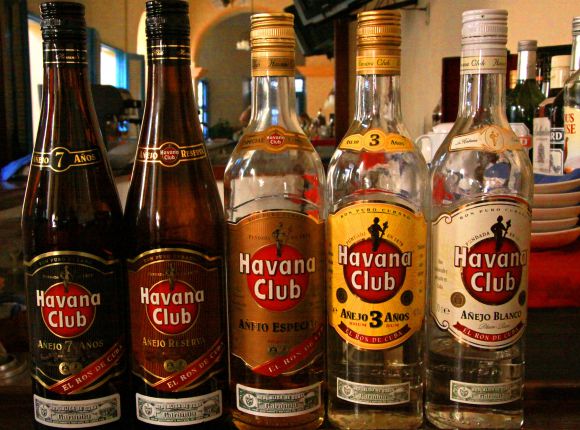
“Havana Club” is mostly available at the upscale shops and hotels, a very good place to taste and buy is their own “Havana Club Rum Museum”. There, for a small fee ($6), you can learn the history of rum in Cuba, get a taste of the rums produced by Havana Club and, of course, purchase a bottle or two. Prices vary between $3 and 15.
NOTE: Cuban rum is not allowed into the USA.
Avenida del Puerto 262, esq. Sol,
Habana Vieja
Ciudad de La Habana
Tel: 53 (7) 861 8051 / 862 4108.
contacto@museo.havanaclub.cu
Open daily from 9:30.am to 5:30 pm
Havana Club Bar open daily
from 9:30 am to 12:00 am
Entry fee: 7 Cuc (around 6 euros) / free for locals
5. Coconut Monkeys

Desampardos, Havana, Cuba
aisles and aisles of paintings, jewelry and other local handicrafts.
6. Cuban Food
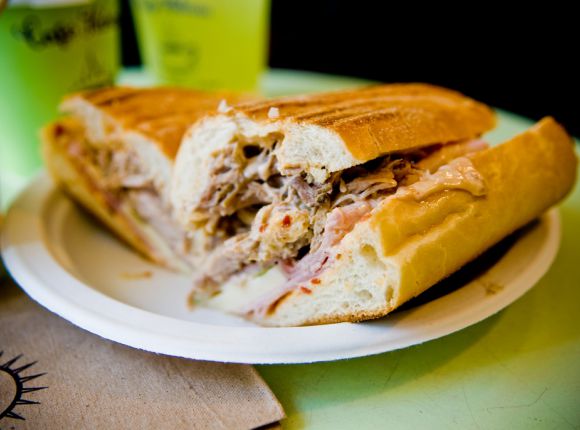
The most typical Cuban food - comida criolla - comprises various ingredients, including mandatory protein base (fish, seafood, pork, chicken or beef), salad, fried plantains, rice and beans. Resulting from colonization and slave trade is the presence in Cuban cuisine of Spanish and African influences. Spanish colonizers brought over citrus fruits, along with rice and vegetables, while the African slaves experimented with cassava, maize and okra. Other Cuban culinary classics include mojo chicken and black beans and rice, named so after Moors and Christians contributed to this culinary symbiosis.
MERCADO CUBALSE at 5th Avenue and 42nd Street, Miramar is a classic mall with food and clothing departments.
7. Tostonera

Nearly 80% of all Cuban households have a tostonera in their possession. Exactly how many can find tostonera in the kitchen, when needed, is another question. For those who use them regularly, wood is the most preferred type - be it two slabs of cheap pine connected with a rawhide strap or some handcrafted hardwood piece with brass hinges and fancy artwork. Some tostoneras look so beautiful that people merely use for decorative purposes. Alternatively, Tostones can be shaped as little cups and stuffed with fillings - shrimp, picadillo, roast pork and other. Stuffed tostones make a great appetizer or party food. Several producers offer special tostoneras capable of automatically converting flat tostón into a small bowl fit for stuffing.
MERCADO CUBALSE at 5th Avenue and 42nd Street, Miramar is a classic mall with food and clothing departments.
8. Cuban Vintage Stamps or Coins
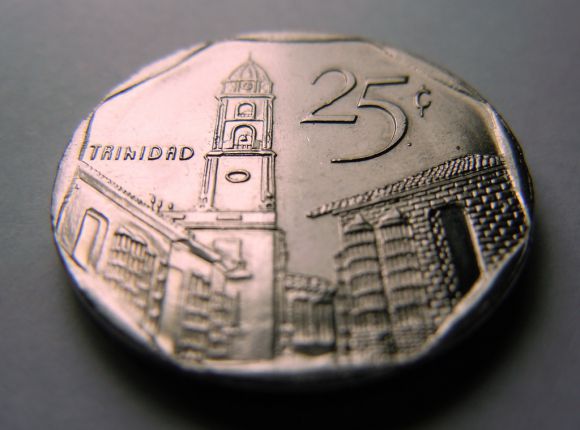
After Cuba gained independence in 1902, the first Cuban coins, featuring a star design, were minted in the USA and brought into circulation in 1915. Some of those coins were nice large silver pieces, relatively affordable. Golden ones were also in use, denominated at 1, 2, 4, 5, 10 and 20 pesos - they are now rare items that only wealthy collectors can afford. The Revolution of 1958-1960 delivered a major blow onto the Cuban-American relations, following which the Cuban currency was pegged to the Soviet Ruble. The new Cuban coins were made of aluminium. Today, the US Dollar is worth around 25 Pesos, and the coins of 1, 2, 5, 20 centavos and 1 & 3 pesos (in keeping with the communist tradition) are still used, carrying a portrait of Che Guevara, a revolutionary much famous in Cuba and throughout the world.
Cuban monetary system implies coexistence of 2 currencies - the so-called 'hard' Convertible Peso and the ordinary Peso. Basic goods are sold in Pesos, but luxury items are only available for CUC, which stands 1:1 to the US dollar. As of 1981, Cuban coins have been issued by the Instituto Nacional de Turismo (INTUR), however, with the introduction of the Convertible Peso in 1994, the coins no longer carry the INTUR inscription. Unlike Europeans, the US collectors are not likely to be allowed to bring in Cuban coins, which is a shame since some of them may prove a good investment if the newest diplomatic developments gain momentum.
Read more: https://goo.gl/HN8dLa
Anticuaria El Navío, Calle Obispo 119, between Oficios and Mercaderes (tel. 7/861-3187)
9. Cuban License Plates
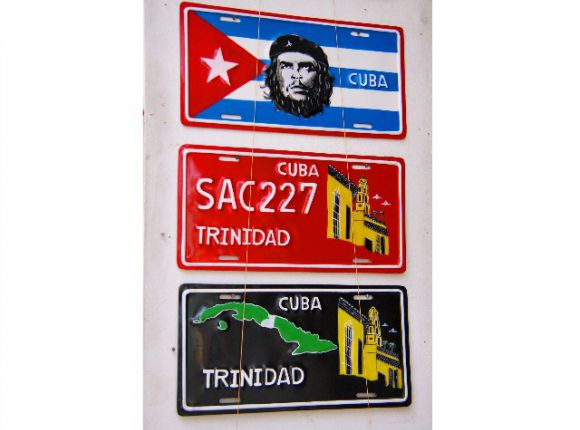
Havana is a home to a grand car museum, Museo del Auto Antiquo, housed in one of the beautifully restored 18th century buildings on Calle Officios, a historic pedestrian street. The museum's collection features Cadillacs, Rolls Royce, Packards and other automotive reminders of Cuba’s magnificent, decadent past. The displayed vehicles are mostly untouched originals, although the country’s oldest car, a 1908 Cadillac, may be away for restoration.
At a close-by street market, in Plaza de Armes, there's a good chance of finding an original Cuban yellow license plate, contrary to those plastic fakes sold in souvenir shops. Most genuine pieces are fixed to the cars, few of which are ever scrapped in Cuba, and therefore can't be bought.
There are three basic colors for Cuban license plates: yellow for privately owned cars, red for rented vehicles, and blue for official and government-owned fleet. A handful of Mercedes and BMWs seen in Cuba are predominantly blue licensed.
10. Books
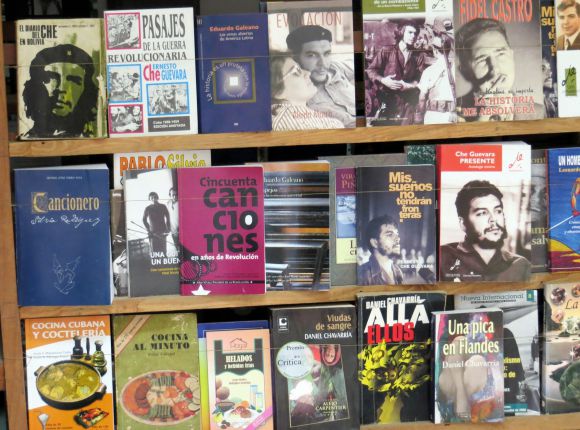
11. Convertible Pesos and Cuban Pesos
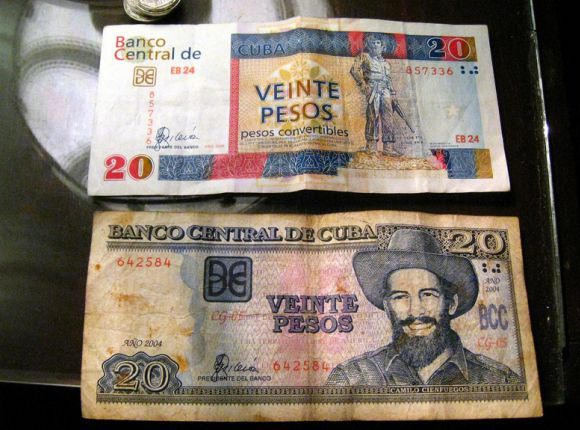
12. Habana 1791 Perfumes
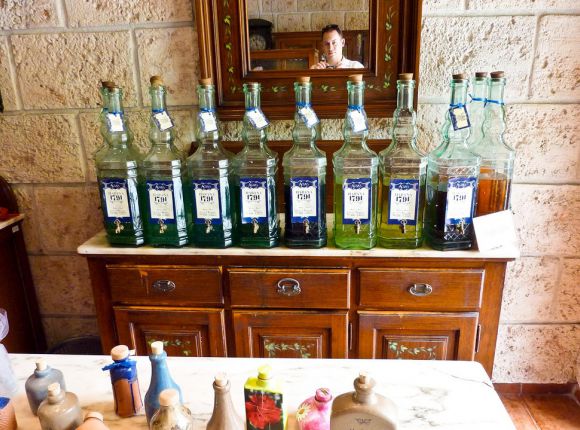
And if the big 12 are not enough for you, custom-made scents can be created on site before your very eyes, reflecting your personality. In a bid to attain that, prior to starting mixing the scents, the alchemist-perfumer will give you a little chit-chat to reveal your state of mind, mood, character or anything else responsible for your attractive smelliness. The resulting product will be unique, very much like a fingerprint. The perfume bottles vary in style and sizes, and are also subject to the customer's selection. Some of them are created by local ceramists, others - brought all the way from India.
Mercaderes and Obrapia Street
13. Cuban Music
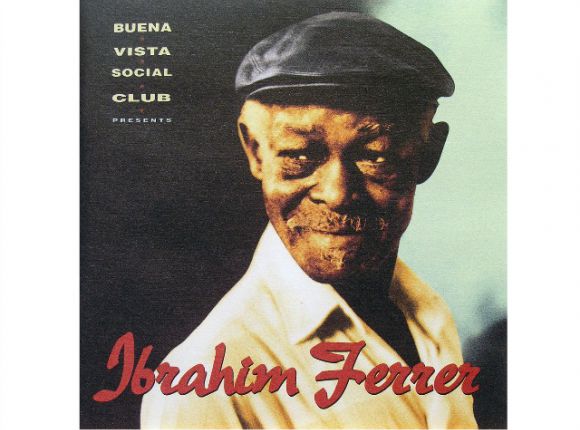
If you're a salsa fan, you should get yourself a couple of discs by Los Van Van or NG La Banda. Those in favor of Cuban folk music must check out the recordings of Silvio Rodriguez and Pablo Milanes. Lovers of Jazz should pay attention to Chucho Valdés with Irakere and Gonzalo Rubalcaba, and those who get the kick out of Afro-Cuban tunes must definitely explore Síntesis, Los Muñequitos de Matanzas, Yoruba Andabo, and Clavé y Guaguanco. If you're a son and mambo type of person, go for Adalberto Alvarez y su Son, or the classic re-releases of Beny Moré and Peréz Prado. And last but not least, if you have a copy of Buena Vista Social Club, you might want to dig into some solo albums by their individual members: Compay Segundo, Rubén Gonzales, Eliades Ochoa, and Omara Portuona. If you're keen on Reggaeton, Eddy-K is your choice.
It is safer to buy from authorized dealers, rather than street markets or vendors, as they may flog you some rubbish quality recordings.
NOTE: Cuban music, as well as CDs with Cuban informational and educational materials, are banned in the U.S.
14. Cuban Coffee
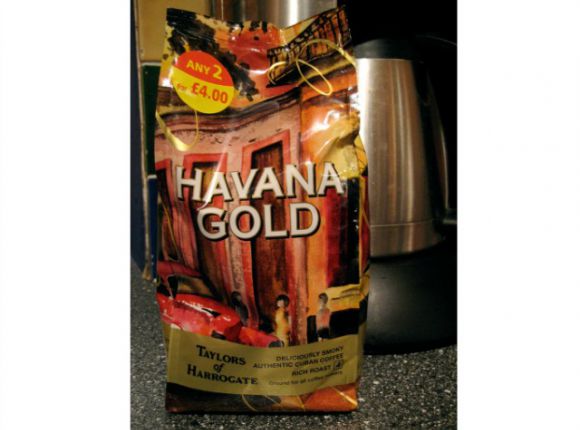
The first coffee plant in the country was commissioned in 1748 by Jose Antonio Gelabert. Eventually, in 1791, French colonists who fled Haiti after the local revolution and ensued abolition of slavery, brought along advanced methods of coffee production to Cuba. At some point, Cuba became a main supplier of coffee to Spain, with coffee trade contributing to the island's economy more than its sugar production. At its peak prior to 1959, Cuba exported annually 20,000 tons of coffee worth $21.5 million. Alongside turning into one of the country's major exports, coffee also proved essential to Cuban way of life and culture. Most Cubans, those who live on the island or abroad, drink coffee at least two times a day as a must. The Revolution of 1959 saw nationalization of the Cuban coffee industry and brought it to a slow decline. Nowadays, Cubans are allotted just 2 ounces of coffee for 15 days, and that coffee is of a very poor quality, mixed with other ingredients to make up volume.
MERCADO CUBALSE at 5th Avenue and 42nd Street, Miramar is a classic mall with food and clothing departments.
15. Guayabera (Men's shirt)
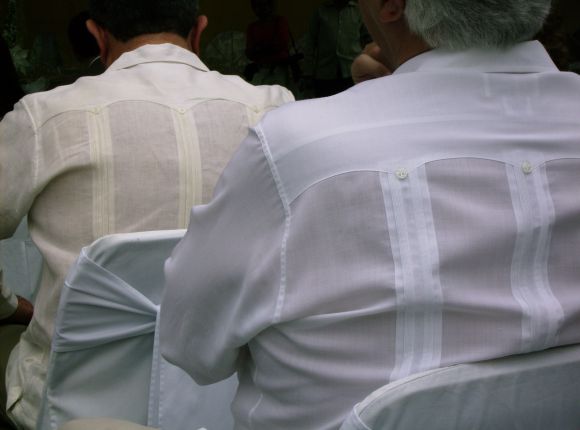.jpg)
Today, guayabera enjoys a major comeback with both Cuban fashion designers and state-run manufacturers. Moreover, it's made a big splash in the U.S. and Europe as well. Perry Ellis has launched a line, and the trendy Urban Outfitters followed suit. Even Land’s End sells them. But it's Cuba that made this loose-fitting garment truly famous, at par with Cuban rum and cigars. The bodyguards of Comandante Fidel often don guayaberas, and the majority of Cuban males have at least one in their wardrobe as a dress of choice for formal occasions. Cuban women also keep up with the trend, prompting a twist on the classic in the form of guayabera dresses and shirts for ladies. Linen and cotton guayaberas that are offered for sale at hotel gift shops would set you back between $25 and $100.
16. Jewelery
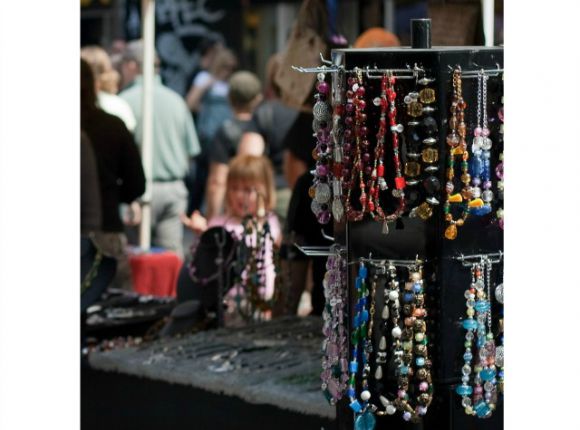
Desampardos, Havana, Cuba
aisles and aisles of paintings, jewelry and other local handicrafts.
A much smaller street market occurs daily in Vedado in a small open area on the south side of La Rampa, at Calle 23 between Calles M and N. The market, which is open daily from 9am to 5pm, has less artwork than the market on Calle Tacón, but it has plenty of woodcarvings and simple jewelry for sale.
17. Che Guevara's Boina (Beret)
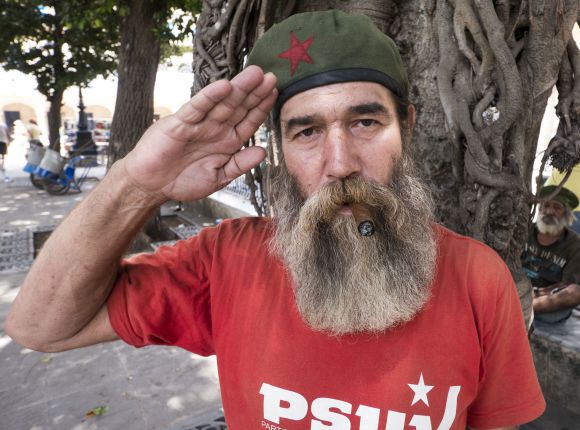.jpg)
Desampardos, Havana, Cuba
aisles and aisles of paintings, jewelry and other local handicrafts.
SUPERMERCADO 70 at 3rd Avenue and 70th Street, Miramar is one of the biggest supermarkets in Havana. It carries wealth of choices by Cuban standards, with a well-stocked food department and clothing shops.
MERCADO CUBALSE at 5th Avenue and 42nd Street, Miramar is a classic mall with food and clothing departments.
18. T-Shirt
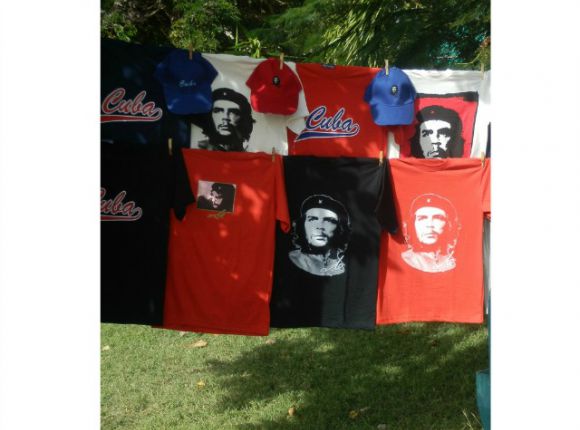
Are you from Cuba? Well, it doesn't really matter whether you're local or expat, or just visiting, you will love sporting your "Cuba is Made of Stars" t-shirt all the same and will find it exciting answering that same question - "Where did you get it?"
Other Interesting Souvenirs from Cuba
If you are outside Cuba and have no immediate plans to visit the island any time soon, but still want to procure some authentic Cuban souvenirs without leaving your home country, you may do so right here, right now through our partner - Amazon.com. Presented here are some of the top Cuban products sought by foreign visitors, now available online for your convenience.
2. Cigar cutter - If you relish Cuban cigars, getting yourself a proper cigar cutter is a must. This cute, pocket-size mechanical gadget is designed to cut one end off a cigar to ensure its proper smoke with no inch of the precious, smokeable tobacco going to waste (that is if the cap of a cigar is cut carelessly).
3. Cuban Spices and Snacks - For a perfect Cuban taste back home, procure some Cuban spices - a vibrant blend of onion, bell peppers, garlic, oregano and cumin - to season your Cuban-inspired cooking: meat, beans and rice garnish, salsa and salads. If you're a sandwich-eater, consider mild yellow Cuban mustard with a hint of garlic, a touch of citrus and a splash of white wine for a unique Cuban flavor. For dessert, indulge your sweet tooth with some deliciously crumbly cookies from the Cuban town of Moron – tortica de Moron – featuring two popular South American ingredients, lime and vanilla, and resembling in recipe the Spanish mantecado (polveron cookie).
Walking Tours in Havana, Cuba
Create Your Own Walk in Havana
Old Town Walking Tour
Havana became a major stopping point between the newly discovered Americas and ancient Europe. In the 1600s, Havana was a major shipbuilding port.
Old Havana is listed as a UNESCO World Heritage Site. The historic city has five... view more
Tour Duration: 2 Hour(s)
Travel Distance: 2.7 Km or 1.7 Miles
Historical Churches and Cathedrals Walking Tour
The old Havana Cathedral, located in a... view more
Tour Duration: 2 Hour(s)
Travel Distance: 3.1 Km or 1.9 Miles
Hemingway's Havana Walking Tour
Hemingway was a frequent patron at El Floridita, famous for its daiquiris.... view more
Tour Duration: 1 Hour(s)
Travel Distance: 1.1 Km or 0.7 Miles






























